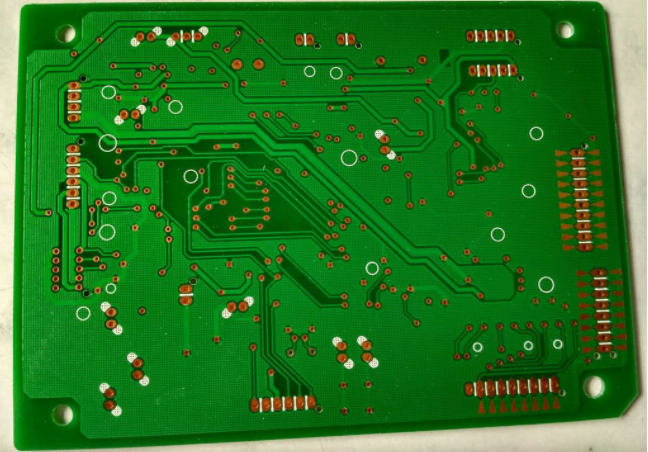PCB copper coating problem in circuit board factory
Circuit board manufacturers have the goal of making the PCB as unmodified as possible when soldering, and most PCB manufacturers will require PCB defaulters to add copper or grid-like ground wires in the open areas of the PCB.
However, our engineers dare not use this "supplement" casually, perhaps because they have experienced "hardships" before in PCB adjustment, or it may be that senior experts have not given clear judgments.
In the end, whether the copper coating is "the advantages outweigh the disadvantages" is still "the disadvantages outweigh the advantages". This article explains this problem from the perspective of actual measurement.
The final results of the survey below are obtained using the EMSCAN electromagnetic interference electronic scanning system. EMSCAN enables us to see the dispersion of the electromagnetic force field in real time. It has 1218 near-field probes. If it is deemed appropriate, electronic switching technology is used. High-speed electronic scanning PCB is born. Electromagnetic force field. It is the only electromagnetic force field near-field electronic scanning system that uses array receiving antennas and scanning technology that is deemed appropriate in the world, and it is also the only system that can obtain complete electromagnetic force field information of the measured object.

In high-frequency conditions, the scattered capacitance of the wiring on the printed circuit board will be effective. When the length is greater than 1/20 of the corresponding wavelength of the noise frequency, the receiving antenna effect will occur, and the noise will be emitted through the wiring.
We know that the relationship between frequency and wavelength is f = C/λ.
Where f is the frequency, the unit is Hz, λ is the wavelength, the unit is m, and C is the speed of light, which is equal to 3*108 m/s
For the signal of 22.894MHz, its wavelength λ is: 3*108/22.894M=13 meters. λ/20 is 65cm.
The copper coating of this PCB is too long, exceeding 65cm, which causes the initiation of receiving antenna effects.
Up to now, in our PCB, there are chips that are widely considered suitable and have a rising edge of less than 1ns. If the chip's rising edge is 1ns, the frequency of electromagnetic interference generated by it will be as high as fknee = 0.5/Tr = 500MHz. For a 500MHz signal, its wavelength is 60cm, λ/20=3cm. In other words, a 3cm-long wiring on the PCB may form a "receiving antenna".
Therefore, in a high-frequency circuit, be sure not to feel that a ground wire is connected to the ground. This is the "ground wire". It is necessary to punch through holes in the wiring with a pitch less than λ/20, and "satisfactorily ground" the simplest surface of the multilayer board.
For ordinary digital circuits, at a distance of 1cm to 2cm, punch holes for the "ground supplement" of the component surface or the soldering surface, and successfully achieve satisfactory grounding of the simplest surface with the ground, and the ability to ensure that the "ground supplement" is not There will be a "bad" effect.
From this, we implemented the following extensions:
Do not apply copper in the wide area of the wiring of the mid-waist layer of the multilayer board. Because it is difficult for you to make this copper "satisfactory grounding"
For a PCB, no matter there are several types of power supplies, it is recommended to use the power sharing technology as deemed appropriate, and only use one power layer. Since the power supply is the same as the ground, it also "refers to the simplest surface", the "satisfactory grounding" of the power supply and the ground is successfully achieved through a large number of filter capacitors. Where there is no filter capacitor, there is no "grounding".
The metals in the facility, such as metal heat sinks, metal reinforcement strips, etc., must successfully achieve "satisfactory grounding".
The heat-dissipating metal block of the three-terminal regulator must be satisfactorily grounded.
The ground isolation strip near the crystal oscillator must be satisfactorily grounded.
Thesis: If the grounding problem is handled properly, the copper coating on the PCB board must be "pros outweigh the disadvantages". It can reduce the return plane of the signal line or the size of the surface of the object, and reduce the signal's external electromagnetic interference.